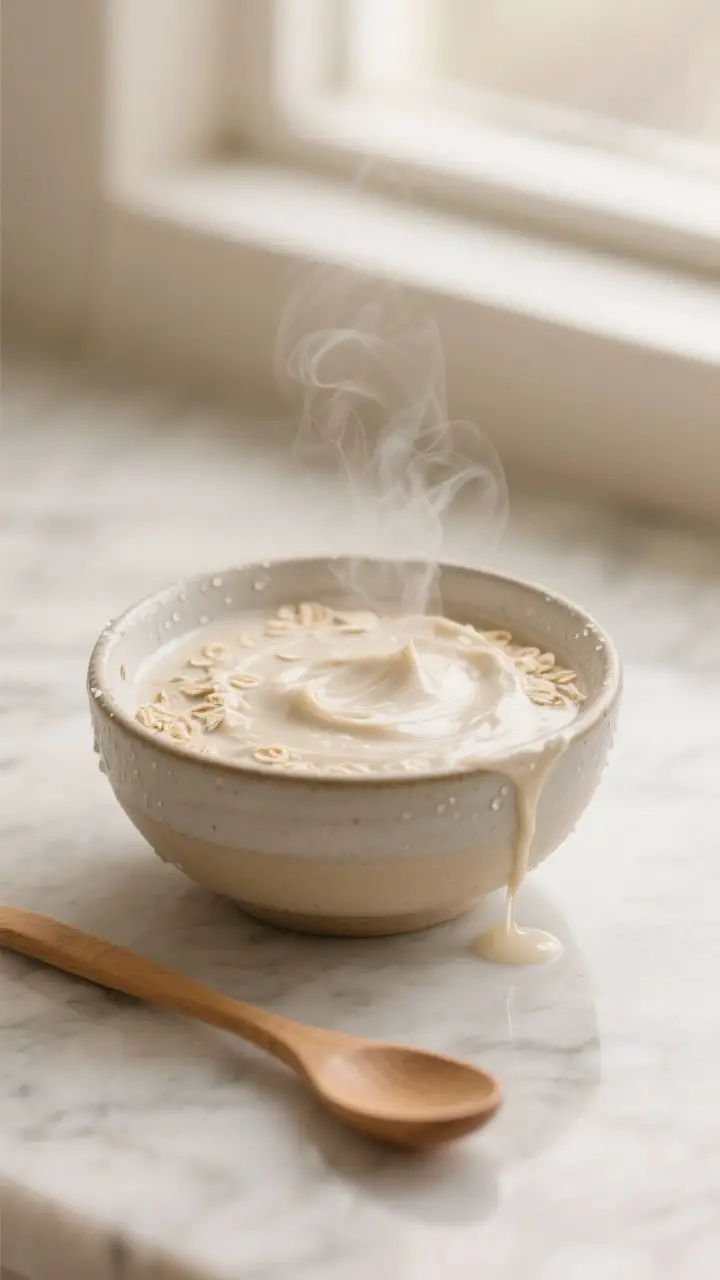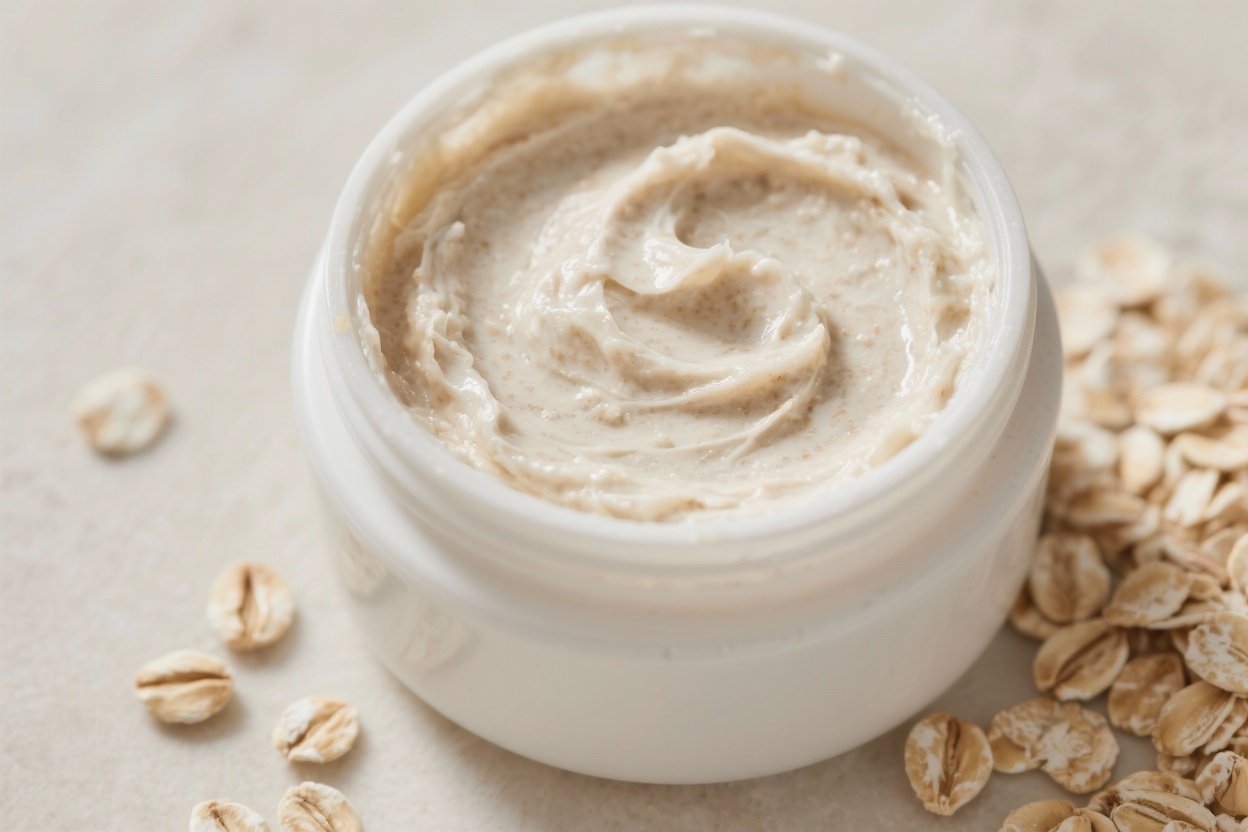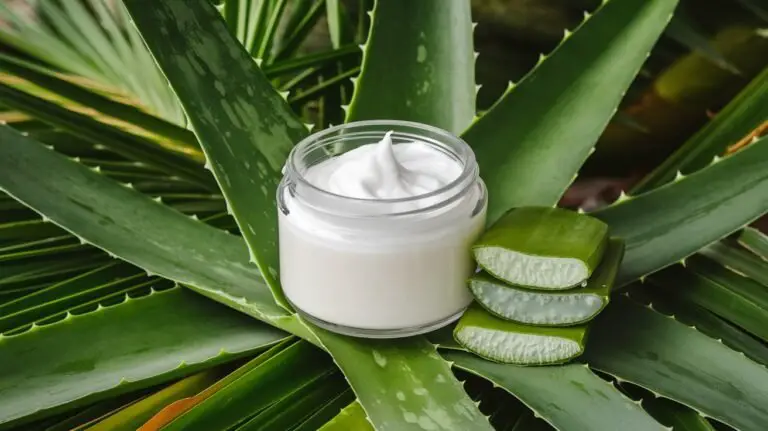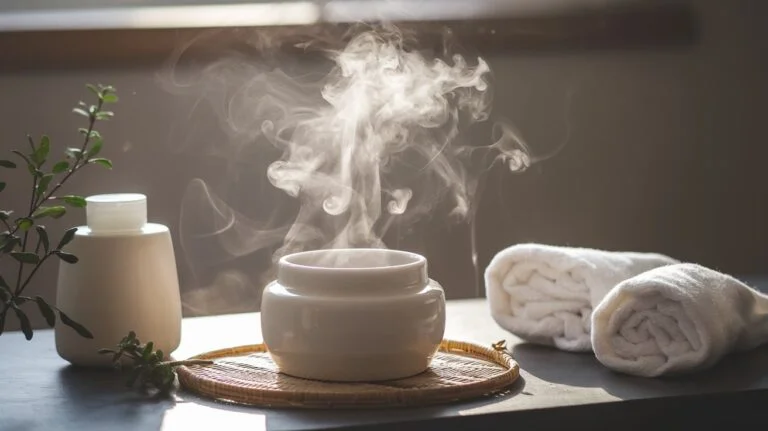Natural Oatmeal Mask For Sensitive Skin
Sensitive skin throwing tantrums again? Same. When your face decides to sting, flush, or itch for literally no reason, you need a mask that calms things down without drama.
Enter oatmeal—yes, the stuff in your breakfast bowl. It’s gentle, soothing, and works like a charm when you need instant comfort without the fancy skincare price tag.
Why Oatmeal Loves Sensitive Skin (And The Feeling Is Mutual)

Oatmeal—specifically colloidal oatmeal—is a skin-soothing MVP. It helps reduce redness, tightness, and irritation faster than you can say “why is my face angry.” Dermatologists recommend it for a reason.
📖 Get Access to 50+ Printable Smoothie Recipes Instantly! 🖨️
Boost your health with delicious smoothies! These easy-to-follow printable recipe eBooks are perfect for detoxing, fitness goals, and tasty plant-based living. Available for instant download on Etsy! 🌿✨
Here’s what makes it special:
- Beta-glucans help skin hold onto moisture and support barrier repair.
- Avenanthramides (oat compounds) calm itching and visible redness.
- Natural saponins gently cleanse without stripping.
- Starches and lipids create a soft, protective layer on the skin.
FYI, if your skin gets cranky with fragrance, essential oils, or harsh acids, oatmeal feels like a hug.
Colloidal vs Kitchen Oats: What Should You Use?
Both can work, but they’re not identical twins.
- Colloidal oatmeal: Finely ground oats designed for skincare. Mixes smoothly, rinses clean, and tends to feel more soothing.
- Regular oats: Your pantry oats (old-fashioned or quick). You can DIY them into a fine powder with a blender, but they may feel a bit grainy if not powdered enough.
IMO, if your skin goes full diva, use colloidal oatmeal.
But if you want a budget-friendly option, blitz your oats into a fine powder and you’re golden.

The Basic Natural Oatmeal Mask (Sensitive-Skin Safe)
This is the no-fuss, soothing version you can make in 2 minutes. It’s gentle, simple, and perfect for first-timers.
What You’ll Need
- 2 tablespoons colloidal oatmeal (or very finely ground oats)
- 2–3 tablespoons lukewarm water or unsweetened oat milk
- Optional: 1 teaspoon plain unsweetened yogurt for extra moisture (skip if dairy-sensitive)
How To Make It
- In a small bowl, mix the oatmeal with water (or oat milk) until you get a creamy paste—think runny yogurt.
- Let it sit 2–3 minutes so the oats hydrate and thicken.
- Patch test on your jawline first. Sensitive skin doesn’t like surprises.
How To Use It
- Apply to clean, slightly damp skin—face and neck if you like.
- Leave on for 10–15 minutes.
Don’t let it fully dry; mist with water if it starts cracking.
- Rinse with lukewarm water and pat dry. Follow with a simple moisturizer.
Tip: Keep it boring. No essential oils.
No lemon. No cinnamon. We’re calming, not torturing.
Customize Your Mask (Without Upsetting Your Skin)
Let’s add a little extra oomph, but keep it sensitive-skin friendly.
Pick one add-in at a time and see how your skin reacts.
For Extra Hydration
- Honey (1 teaspoon): Humbly humectant and soothing. Choose raw or manuka if you want to be fancy.
- Aloe vera gel (1 teaspoon): Cooling and calming. Use pure gel, not a neon green mystery gel.
- Glycerin (3–5 drops): Boosts moisture.
A little goes a long way.
For Barrier Support
- Jojoba oil (4–6 drops): Lightweight, skin-friendly, and unlikely to clog pores.
- Squalane (4–6 drops): Great for dryness and sensitivity without feeling greasy.
For Gentle Brightening
- Plain yogurt (1 teaspoon): Adds mild lactic acid for softness. Keep it short—10 minutes max.
- Banana mash (1 teaspoon): Softens and hydrates without the drama.
Avoid: citrus, cinnamon, baking soda, essential oils, and scrubs. Your skin will clap back.

Make It a Routine (That Doesn’t Annoy Your Skin)
You don’t need to mask daily.
Think of this like a reset button on irritated days.
- Frequency: 1–3 times per week, based on how needy your skin feels.
- Before the mask: Cleanse with a gentle, fragrance-free cleanser.
- After the mask: Use a simple moisturizer with ceramides or petrolatum. Minimalism wins here.
- At night? Seal with a thin layer of occlusive (like a dab of ointment) if you’re extra dry.
Perfect Pairings
- Redness and heat: Keep the mask cool (not cold) and finish with a niacinamide-free moisturizer if niacinamide irritates you.
- Post-shave or windburn: Oat + aloe combo feels amazing.
- After retinoids: Use on off nights to replenish moisture. Avoid exfoliants the same day.
How To Store It (And When To Toss)
Oat masks are best fresh.
But life happens.
- Single use: Make what you need and use it immediately.
- Short-term storage: Keep in a clean, covered container in the fridge for up to 2 days.
- Watch for: separation, weird smells, or color changes. When in doubt, toss it.
DIY Colloidal Oatmeal
No store-bought? Blend dry oats to a super-fine powder.
Test by rubbing some between wet fingers—if it feels silky, you nailed it. If it’s gritty, keep blending.
Common Mistakes (So You Don’t Learn The Hard Way)
We’ve all been there. Here’s what to avoid:
- Letting it dry like cement. Drying = dehydrating.
Keep it slightly damp.
- Overcomplicating the recipe. More ingredients = more potential irritation.
- Scrubbing during rinse-off. Gentle massage only. Your face is not a countertop.
- Using hot water. Heat can trigger redness. Stick to lukewarm.
- Skipping the patch test. Even “gentle” can irritate if you’re reactive.
When Oatmeal Isn’t Enough
Sometimes irritation runs deeper—eczema flares, contact dermatitis, or allergies.
If redness or burning continues despite simple routines, talk to a derm. They can recommend barrier-repair moisturizers, short-term steroid use, or non-steroidal creams. IMO, oatmeal helps a ton, but medical issues need medical solutions.
FAQ
Can I use this oatmeal mask every day?
You could, but you probably don’t need to.
Start with 2–3 times a week and adjust based on your skin’s mood. If your face feels calm and balanced, once a week may be plenty.
Will oatmeal clog my pores?
Unlikely, especially if you rinse thoroughly and grind your oats finely. If you’re acne-prone, keep the recipe simple—avoid heavy oils and rinse well.
Patch testing still matters.
Is it safe for rosacea?
Generally, yes. Oatmeal’s anti-inflammatory compounds make it a popular choice for rosacea-prone skin. Keep the mask cool, avoid yogurt if you’re reactive, and don’t let it dry out.
Can I mix oatmeal with green tea or chamomile?
Yes, using cooled brewed tea as the liquid can feel soothing.
Just make sure it’s plain and cooled to lukewarm. Skip if you know you’re sensitive to botanicals.
What if I’m allergic to oats?
Then skip it entirely. Try alternatives like rice water, aloe gel, or a fragrance-free ceramide mask.
Your skin won’t miss what it can’t tolerate.
Can I use instant oatmeal packets?
Only if they’re plain, unsweetened, and unflavored. No maple brown sugar on your face, please. Flavorings and additives can irritate sensitive skin.
Wrapping It Up
An oatmeal mask is the skincare equivalent of comfy sweatpants: simple, soothing, and always there when you need it.
Keep the recipe basic, don’t let it crust over, and pair it with a gentle routine. Your skin gets calm, you save money, and breakfast ingredients become your new spa day—win-win, IMO.







